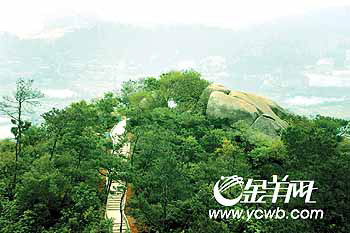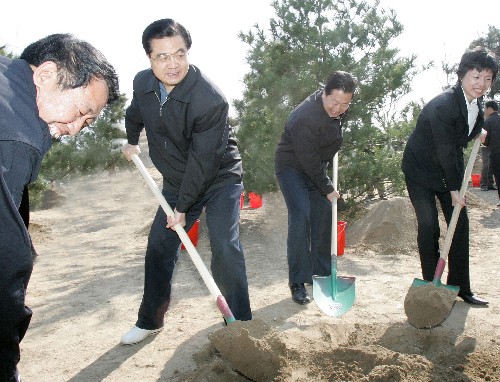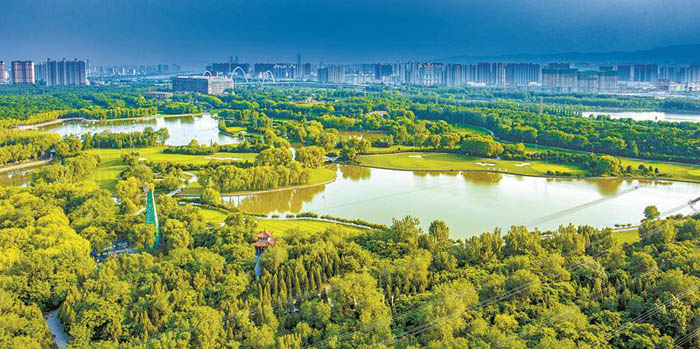
公民科学在深圳城市公园蝴蝶多样性保护中的应用
编号
lyqk011405


中文标题
公民科学在深圳城市公园蝴蝶多样性保护中的应用


作者单位
1. 深圳市中国科学院仙湖植物园 广东深圳 518004;
2. 深圳市南亚热带植物多样性重点实验室 广东深圳 518004;
3. 山东农业大学 山东泰安 271017


期刊名称
中国城市林业


年份
2024


卷号
22


期号
1


栏目名称
研究论文


中文摘要
为分析公民科学在自然教育和城市生物多样性保护中的作用,以公民科学在深圳城市公园蝴蝶多样性保护中的应用为例,结合调查数据及国内外相关案例,归纳总结公民科学在科学传播,科研数据收集与监测,参与制定城市保护策略等方面的优势和影响。结果表明,通过参与公民科学项目,城市居民可以成为生物多样性保护的积极参与者,促进城市生态系统的健康和可持续发展。因此,公民科学项目的组织和实施需联合政府、学术机构和社区组织等利益相关者力量,有的放矢地在数据质量控制、参与者培训课程和项目管理质量方面进行改进、完善,推动城市生物多样性保护措施的有效实施。在此基础上,从4个方面提出未来的公民科学在城市生物多样性保护方面的应用前景。


基金项目
国家重点研发计划政府间国际科技创新合作重点专项项目(2021YFE0193200);欧盟地平线2020计划项目(CLEARINGHOUSE);科技基础资源调查专项(2018FY100403);国家自然科学基金青年基金(31801996)


英文标题
Application of Citizen Science to Butterfly Diversity Protection in Shenzhen Urban Parks


作者英文名
Cheng Wen, Lyu Mingcong, Zhang Tingting, Dong Hui


单位英文名
1. Fairy Lake Botanical Garden, Shenzhen & Chinese Academy of Science, Shenzhen 518004, Guangdong, China;
2. Shenzhen Key Laboratory of Southern Subtropical Plant Diversity, Shenzhen 518004, Guangdong, China;
3. Shandong Agricultural University, Tai'an 518004, Shandong, China


英文摘要
To analyze the role of citizen science in nature education and urban biodiversity conservation, this paper investigates the application of citizen science in the conservation of butterfly diversity in Shenzhen's urban parks. Based on the investigation data and the relevant cases at home and abroad, the advantages and impacts of citizen science in the fields such as science communication, scientific data collection and monitoring, and participation in the development of urban conservation strategies are summarized. The results show that through participating in citizen science projects, urban residents can be the active actors in biodiversity conservation and promote the healthy and sustainable development of urban ecosystems. In this sense, the organization and implementation of citizen science projects require the collaboration with stakeholders such as governments, academic institutions and civil organizations to make specific efforts in data quality control, participant training and project management quality, so as to promote the effective implementation of urban biodiversity conservation measures. Based on the above discussions, it is proposed from 4 perspectives that citizen science will provide a broader prospect for urban biodiversity conservation.


英文关键词
citizen science;urban park;butterfly diversity;Shenzhen


起始页码
150


截止页码
156


投稿时间
2023/7/14


作者简介
程纹(1987-),女,硕士,工程师,研究方向为城市生物多样性。E-mail:chengwen@szbg.ac.cn


通讯作者介绍
董慧(1981-),女,博士,正高级工程师,研究方向为城市生物多样性。E-mail:donghui@szbg.ac.cn


E-mail
donghui@szbg.ac.cn


DOI
10.12169/zgcsly.2023.07.14.0003


参考文献
[1] SILVERTOWN J.A new dawn for citizen science[J].Trends in Ecology & Evolution,2009,24(9):467-471.
[2] SCHMELLER D S,HENRY P Y,JULLIARD R,et al.Advantages of volunteer-based biodiversity monitoring in Europe[J].Conservation Biology,2009,23(2):307-316.
[3] DICKINSON J L,ZUCKERBERG B,BONTER D N.Citizenscience as an ecological research tool:challenges and benefits[J].Annual Review of Ecology,Evolution,and Systematics,2010,41:149-172.
[4] SULLIVAN B L,AYCRIGG J L,BARRY J H,et al.The eBird enterprise:an integrated approach to development and application of citizen science[J].Biological Conservation,2014,169:31-40.
[5] 张健,陈圣宾,陈彬,等.公众科学:整合科学研究、生态保护和公众参与[J].生物多样性,2013,21(6):738-749.
[6] CHANDLER M,SEE L D,COPAS K,et al.Contribution of citizen science towards international biodiversity monitoring[J].Biological Conservation,2017,213:280-294.
[7] FRITZ S,SEE L D,CARLSON T,et al.Citizen science and theunited nations sustainable development goals[J].Nature Sustainability,2019,2(10):922-930.
[8] BORDER J A,NEWSON S E,WHITE D C J,et al.Predicting the likely impact of urbanisation on bat populations using citizen science data,a case study for Norfolk,UK[J].Landscape and Urban Planning,2017,162:44-55.
[9] TAUCHER A L,GLOOR S,DIETRICH A,et al.Decline indistribution and abundance:urban hedgehogs under pressure[J].Animals,2020,10(9):1606.
[10] LIM V C,SING K W,CHONG K Y,et al.Familiarity with,perceptions of and attitudes toward butterflies of urban park users in megacities across East and Southeast Asia[J].Royal Society Open Science,2022,9(11):220161.
[11] 张淑菁,王成.近20年来欧洲城市生物多样性研究进展[J].中国城市林业,2022,20(6):15-24.
[12] 韩丹,韩丛海,王成,等.北京不同城市区域蝴蝶多样性及优势种生态位差异[J].中国城市林业,2023,21(5):74-81.
[13] CHEN I C,HILL J K,OHLEMVLLER R,et al.Rapid range shifts of species associated with high levels of climate warming[J].Science,2011,333(6045):1024-1026.
[14] HODGSON J A,THOMAS C D,OLIVER T H,et al.Predicting insect phenology across space and time[J].Global Change Biology,2011,17(3):1289-1300.
[15] MAIR L,THOMAS C D,ANDERSON B J,et al.Temporal variation in responses of species to four decades of climate warming[J].Global ChangeBiology,2012,18(8):2439-2447.
[16] CORBET S A,BEE J,DASMAHAPATRA K,et al.Native or exotic?Double or single?Evaluating plants for pollinator-friendly gardens[J].Annals of Botany,2001,87(2):219-232.
[17] YOUNGSTEADT E,DALE A G,TERANDO A J,et al.Do cities simulate climate change?A comparison of herbivore response to urban and global warming[J].Global Change Biology,2015,21(1):97-105.
[18] HARRISON T,GIBBS J,WINFREE R.Forest bees are replaced in agricultural and urban landscapes by native species with different phenologies and life-history traits[J].Global Change Biology,2018,24(1):287-296.
[19] FORTEL L,HENRY M,GUILBAUD L,et al.Decreasing abundance,increasing diversity and changing structure of the wild bee community (Hymenoptera:Anthophila) along an urbanization gradient[J].PLoS One,2014,9(8):e104679.
[20] DANIELS B,JEDAMSKI J,OTTERMANNS R,et al.A plan bee for cities:Pollinator diversity and plant-pollinator interactions in urban green spaces[J].PLoS One,2020,15(7):e0235492.
[21] LIANG H,HE Y D,THEODOROU P,et al.The effects of urbanization on pollinators and pollination:a meta-analysis[J].Ecology Letters,2023,26(9):1629-1642.
[22] GARBUZOV M,RATNIEKS F L W.Quantifyingvariation among garden plants in attractiveness to bees and other flower-visiting insects[J].Functional Ecology,2014,28(2):364-374.
[23] 韩丹,王成,殷鲁秦.北京城市蝴蝶蜜源植物网络特征及重要蜜源植物识别[J].生态学报,2021,41(22):8892-8905.
[24] DMITRUK M,STRZAȽKOWSKA-ABRAMEK M,BO EK M,et al.Plants enhancing urban pollinators:nectar rather than pollen attracts pollinators of Cotoneaster species[J].Urban Forestry & Urban Greening,2022,74:127651.
[25] TEW N E,BALDOCK K C R,VAUGHAN I P,et al.Turnover in floralcomposition explains species diversity and temporal stability in the nectar supply of urban residential gardens[J].Journal of Applied Ecology,2022,59(3):801-811.
[26] BALDOCK K C R,GODDARD M A,HICKS D M,et al.A systems approach reveals urban pollinator hotspots and conservation opportunities[J].Nature Ecology & Evolution,2019,3(3):363-373.
[27] SING K W,DONG H,WANG W Z,et al.Can butterflies cope with city life?Butterfly diversity in a young megacity in southern China[J].Genome,2016,59(9):751-761.
[28] NEWMAN G,WIGGINS A,CRALL A,et al.The future of citizen science:emerging technologies and shifting paradigms[J].Frontiers in Ecology and the Environment,2012,10(6):298-304.
[29] LEPCZYK C A,ARONSON M F J,EVANS K L,et al.Biodiversity in the city:fundamental questions for understanding the ecology of urban green spaces for biodiversity conservation[J].BioScience,2017,67(9):799-807.
[30] DUNN R R,GAVIN M C,SANCHEZ M C,et al.The pigeon paradox:dependence of global conservation on urban nature[J].Conservation Biology,2006,20(6):1814-1816.
[31] BELAIRE J A,WESTPHAL L M,WHELAN C J,et al.Urban residents' perceptions of birds in the neighborhood:Biodiversity,cultural ecosystem services,and disservices[J].The Condor,2015,117(2):192-202.
[32] CAMPBELL-ARVAI V.Engaging urban nature:improving our understanding of public perceptions of the role of biodiversity in cities[J].Urban Ecosystems,2019,22(2):409-423.
[33] FUKANO Y,SOGA M.Why do so many modern people hate insects?The urbanization-disgust hypothesis[J].Science of the Total Environment,2021,777:146229.
[34] SOGA M,GASTON K J,KOYANAGI T F,et al.Urban residents' perceptions of neighbourhood nature:does the extinction of experience matter?[J].Biological Conservation,2016,203:143-150.
[35] MILLER J R.Restoration,reconciliation,and reconnecting with nature nearby[J].Biological Conservation,2006,127(3):356-361.
[36] SOGA M,GASTON K J.Extinction of experience:the loss of human-nature interactions[J].Frontiers in Ecology and the Environment,2016,14(2):94-101.
[37] CAMERON R W F,BRINDLEY P,MEARS M,et al.Where the wild things are!Do urban green spaces with greater avian biodiversity promote more positive emotions inhumans?[J].Urban Ecosystems,2020,23(2):301-317.
[38] ALCOCK I,WHITE M P,PAHL S,et al.Associations between pro-environmental behaviour and neighbourhood nature,nature visit frequency and nature appreciation:evidence from a nationally representative survey in England[J].Environment International,2020,136:105441.
[39] 张卫哲,吴蒙,王青,等.植物园自然教育学习单应用效果评价[J].中国城市林业,2023,21(4):80-86.


PDF全文
浏览全文


-
相关记录
更多
- 城市公园中风景感召的营造及其正面效益 2024
- 城市公园常见植物固碳能力评估 2024
- “全健康”视角下城市生态疗愈公园设计 2024
- 不同城市热岛梯度下公园冷岛效应和景观特征的关联机制 2024
- 基于自然语言处理的北京城市公园使用后评价 2023
- 基于“场景词袋”的城市公园游人时空行为与空间增效研究 2023
 打印
打印



